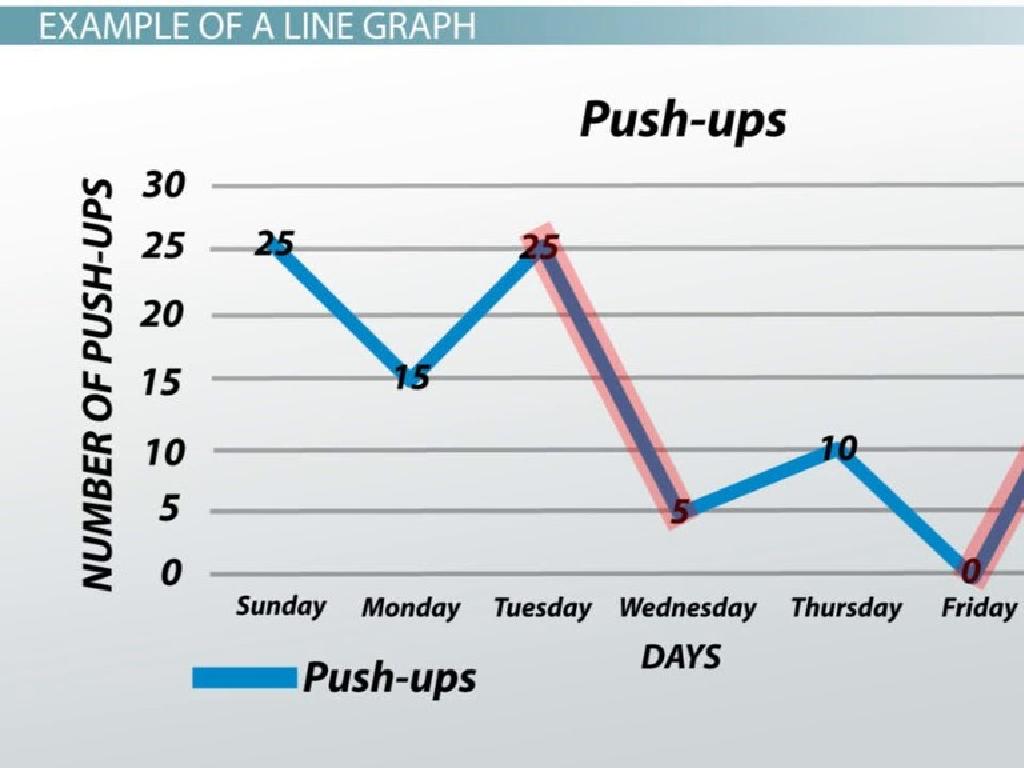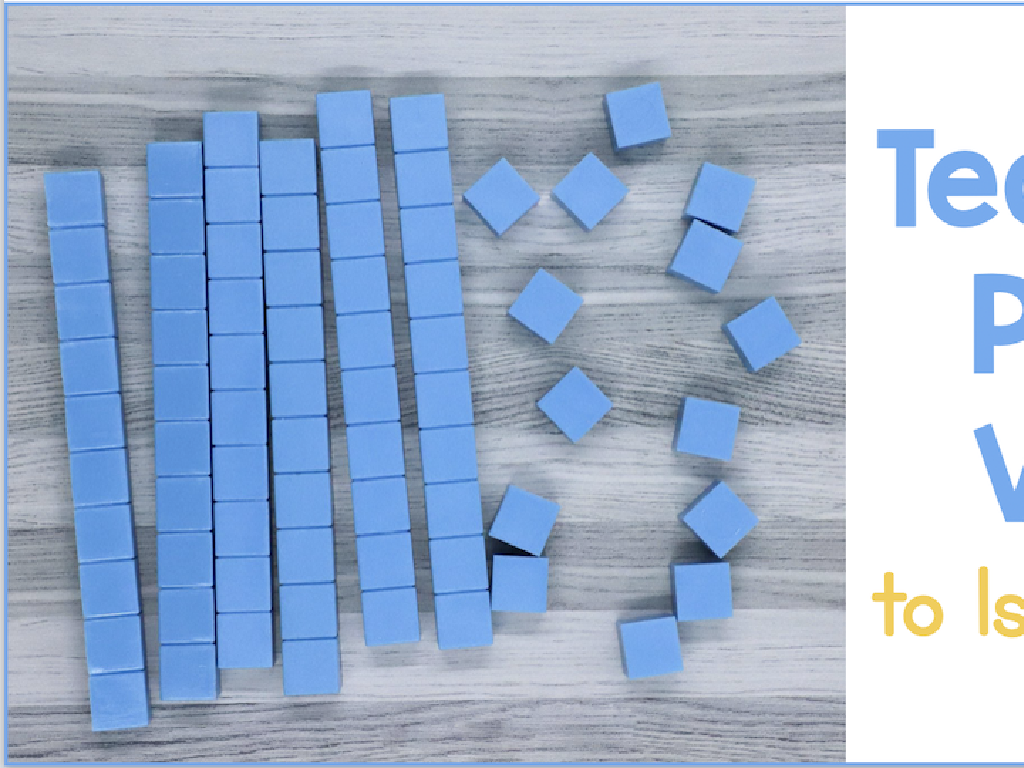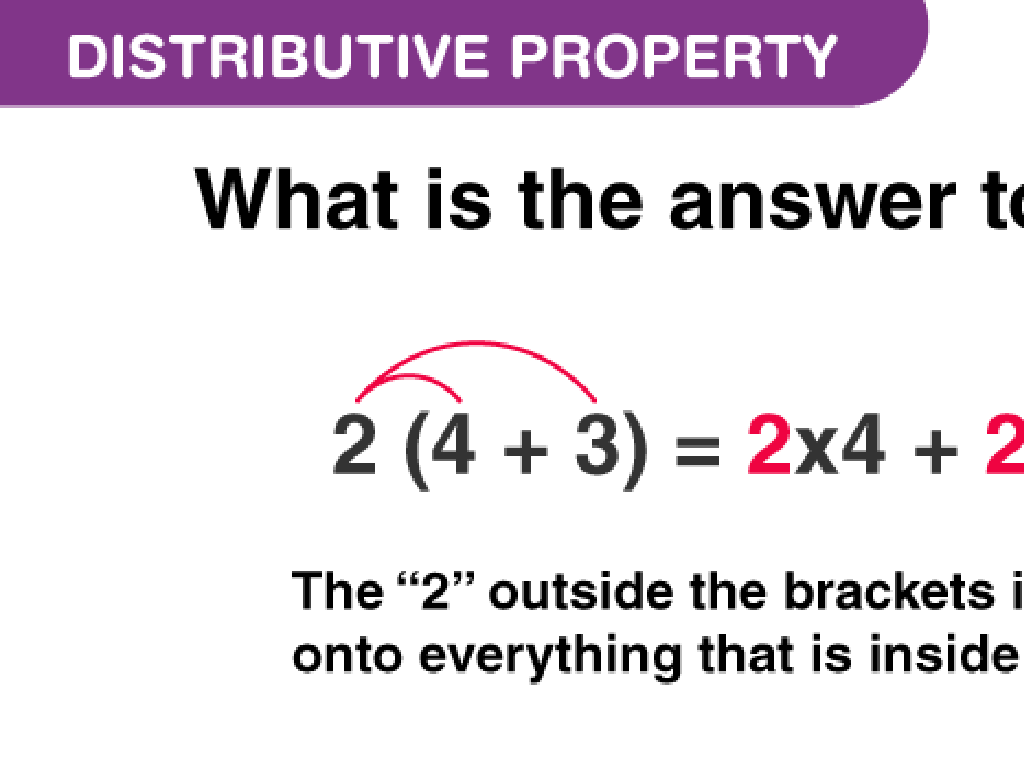Spell Words With Open And Closed Syllables
Subject: Language arts
Grade: Third grade
Topic: Multisyllabic Words
Please LOG IN to download the presentation. Access is available to registered users only.
View More Content
Exploring Open & Closed Syllables
– Learn about syllables
– Syllables are parts of words, like ‘ba-na-na’
– Open vs. closed syllables
– Open syllables end in a vowel, closed end in a consonant
– Syllables help with spelling
– Knowing syllable types improves reading & spelling skills
– Share multisyllabic words
|
This slide introduces the concept of syllables, focusing on open and closed syllables as a key to understanding multisyllabic words. Begin by explaining that syllables are like beats in words and can help us break down and spell longer words. Illustrate the difference between open syllables, which end in a vowel sound and usually have a long vowel sound, and closed syllables, which end in a consonant and typically have a short vowel sound. Encourage students to think of words they know and identify the syllables, asking them to share examples of multisyllabic words. This interactive approach will help them apply the concept immediately and remember it better.
Exploring Syllables in Words
– What’s a syllable?
– A syllable has one vowel sound.
– Single vs. multiple syllables
– ‘Cat’ has 1, ‘elephant’ has 3.
– Clapping out syllables
– We clap once for each syllable.
– Practice with examples
– Try ‘banana’: ba-na-na, clap three times!
|
This slide introduces the concept of syllables to the students. Start by explaining that a syllable is a word part with just one vowel sound. Use simple examples to illustrate single and multisyllabic words. Engage the class by clapping hands to the rhythm of syllables in various words, which helps them understand and feel the concept. Encourage the students to practice with different words and to listen for the vowel sounds that signify syllables. This activity will prepare them for identifying open and closed syllables in future lessons.
Exploring Open Syllables
– Open syllable ends in a vowel
– Vowel has a long sound
– Like in ‘be’ or ‘he’, the vowel ‘e’ sounds like its name
– Examples: ‘me’, ‘go’, ‘baby’
– ‘me’ as in ‘see me’, ‘go’ as in ‘let’s go’, ‘ba-by’ split as ‘ba’ and ‘by’
– Practice saying them aloud
|
This slide introduces the concept of open syllables to third-grade students. An open syllable is one that ends in a vowel, and this vowel typically makes a long sound, which means it says its name. Use examples like ‘me’, ‘go’, and ‘baby’ to illustrate this concept. ‘Baby’ is a two-syllable word where the first syllable ‘ba’ is open and ends with the long ‘a’ sound. Encourage the students to say these words together as a class to reinforce the pronunciation of the long vowel sounds. This exercise will help them recognize and pronounce open syllables in other words.
Understanding Closed Syllables
– Closed syllable ends with a consonant
– Vowel has a short sound
– The vowel sound is short, like ‘a’ in ‘cat’
– Examples: ‘cat’, ‘dog’, ‘napkin’
– ‘cat’ (c t), ‘dog’ (dOg), ‘napkin’ (n p-kin)
– Practice pronouncing closed syllables
– Repeat the words to get comfortable with the sounds
|
This slide introduces the concept of closed syllables to third-grade students. Emphasize that a closed syllable will end in a consonant and the vowel before it will make a short sound, unlike its name. Use examples like ‘cat’, ‘dog’, and ‘napkin’ to illustrate this point. Have the students practice pronouncing these words, focusing on the short vowel sounds. Encourage them to clap out the syllables as they say them to reinforce the concept of syllable division. This activity will help students recognize and pronounce closed syllables in other words.
Identifying Open and Closed Syllables
– Breaking words into syllables
– Open vs. closed syllable
– Open has a vowel ending, closed ends with a consonant
– Partner work: ‘robot’, ‘hotel’, ‘picnic’
– Divide ‘robot’ as ro-bot, ‘hotel’ as ho-tel, ‘picnic’ as pic-nic
– Understanding syllable types
|
This slide is aimed at helping students understand the concept of syllables and the difference between open and closed syllables. Begin by explaining that a syllable is a single, unbroken sound of a spoken word. Then, introduce the concept of open syllables (ending in a vowel sound and usually having a long vowel sound) and closed syllables (ending in a consonant and typically having a short vowel sound). Have the students work in pairs to practice breaking down the words ‘robot’, ‘hotel’, and ‘picnic’ into syllables and identifying each as open or closed. This activity will help reinforce their understanding of syllable types and how they affect pronunciation. Encourage students to explain their reasoning for each word’s syllable type to their partner.
Practice Time: Open & Closed Syllables
– Receive your syllable worksheet
– Divide words into syllables
– Break words at the right spots
– Label syllables as open or closed
– Open syllable: ‘ba-‘ in ‘baby’, Closed syllable: ‘-by’ in ‘baby’
– Recall: Vowels end open, consonants close
|
This slide is for a class activity focused on identifying and labeling open and closed syllables in multisyllabic words. Distribute worksheets with a list of words for students to practice. Guide them to divide each word into its syllables and then label each one as either open or closed. Open syllables end in a vowel sound and are often pronounced with a long vowel sound, while closed syllables end in a consonant and typically have a short vowel sound. For example, in the word ‘robot’, ‘ro-‘ is an open syllable and ‘-bot’ is a closed syllable. Encourage students to say the words aloud to help determine the syllable type. Provide assistance as needed and prepare to discuss common challenges or mistakes in the next class.
Syllable Sort Game
– Let’s play ‘Syllable Sort’!
– Sort words into two groups
– Decide if each word has an open syllable (like ‘he’) or a closed syllable (like ‘hat’).
– Open vs. Closed syllables
– Open syllables end in a vowel with a long sound, and closed syllables end with a consonant.
– Be the first to win a prize!
|
This interactive game is designed to help students understand the difference between open and closed syllables in a fun and engaging way. Before starting the game, explain what open and closed syllables are. Open syllables end in a vowel and the vowel sounds long, like in ‘go’ or ‘we’. Closed syllables end in a consonant and the vowel has a short sound, like in ‘cat’ or ‘top’. Prepare a list of words for the students to sort and make sure there are enough examples for everyone. Consider having small prizes for the winners to motivate participation. This activity will reinforce their ability to decode multisyllabic words and improve their spelling skills.
Class Activity: Syllable Scavenger Hunt
– Explore the classroom for items
– Write down the names you find
– Break words into syllables
– Divide the word where you naturally pause
– Determine open or closed syllables
– Open has a long vowel sound, closed has a short
|
This activity is designed to help students apply their knowledge of open and closed syllables in a fun and interactive way. Encourage the students to look around the classroom for objects or pictures that they can use for this activity. Once they find an item, they should write down its name and then break it down into syllables, clapping out each syllable to help them determine the breaks. After breaking the words into syllables, students should analyze each one to decide if it’s an open syllable (ending with a vowel that makes a long sound, e.g., ‘he’) or a closed syllable (ending with a consonant that makes the vowel sound short, e.g., ‘hat’). Teachers should circulate the room to assist students as needed and prepare to discuss the findings as a class. Possible variations of the activity could include working in pairs, using a timer to make it a timed challenge, or having students draw the items they find alongside the syllable breakdown.
Conclusion: Mastering Syllables
– Celebrating our syllable success
– Syllables aid spelling and reading
– Share a new word and its syllables
– Did you learn ‘robot’? It’s ‘ro-bot’, two closed syllables!
– Practice makes perfect
– Keep finding syllables in words at home!
|
As we wrap up today’s lesson, congratulate the students on their hard work learning about open and closed syllables. Remind them that understanding syllables is a key skill that will help them become better readers and spellers. Encourage them to share a new word they’ve learned, breaking it down into syllables. This reinforces their learning and allows them to demonstrate their knowledge. Finally, emphasize the importance of continued practice at home, suggesting they look for syllables in everyday reading materials. Prepare a list of multisyllabic words to prompt students if they’re hesitant to share.






